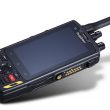Pennsylvania state troopers ‘keep in touch’
The final phase of a statewide Initial Mobile Office (IMO) project that will equip the balance of 1200 State Police patrol vehicles with mobile data terminals and wireless mobile data software was initiated in Pennsylvania the first of September. The IMO project began in 1996 when a task force identified a critical need and developed a plan. In 1999, during then-governor Tom Ridge’s administration, the state’s new Criminal Investigative/Traffic Safety Incident Information Management System (IIMS) was initiated. Implementation of the IIMS IMO project is expected to be complete by the end of 2002.
The first phase of the project converted 550 state police patrol vehicles in south central and southeastern Pennsylvania, adding Motorola’s MW520 mobile data terminals and Premier MDC wireless data solution software to each vehicle in a limited roll-out. Before a terminal was mounted, the IIMS Mobile Team collaborated with 22 justice departments in nine states to design a fixed mount system for the monitor and keyboard that wouldn’t be dislodged under high speeds or accidents. Each monitor is mounted eye level on the dash allowing the officer to never have to take his eyes off the road and each monitor is mounted in a way to not interfere with air bag deployment nor become a projectile when the air bags are deployed. As an added safety feature to the patrol officer, each monitor has an on-screen keyboard using touch screen capabilities and contains an instant emergency screen button to notify other patrol cars and the dispatcher of pending trouble. The keyboard itself is also mounted securely but can be removed from its mount for officer convenience.
The second phase ($6.9 million) of the $12.9 million project will outfit the remaining 630 State Police vehicles with the wireless mobile data solution and the entire system will be in use statewide when completed. “This expansion of the Initial Mobile Office means we will be able to dramatically impact officer safety and provide a system that fits efficiently in an environment in which space is always at a premium,” said Ronald Wilt, IIMS program manager. “It also enables us to put the latest communications technologies right at the officer’s fingertips. That can have an enormous impact on the services we provide the public, including increased Homeland Security efforts.” Some time in the near future, the option of system installation in detective’s vehicles in the state of Pennsylvania will be discussed.
State police troopers now have, at their fingertips, a number of valuable capabilities:
*Access to the Commonwealth Law Enforcement Assistance Network (CLEAN) and the National Crime Information Computer (NCIC) databases to retrieve the most current law enforcement data available. CLEAN is used by the Commonwealth’s criminal justice agencies to access driver’s license and motor vehicle information, check serial numbers of guns and stereos, view state criminal warrants, scrutinize up-to-date information maintained by the Pennsylvania State Police Central Repository, view the Commonwealth’s central registry for Protection from Abuse orders, stolen and wanted files and various other services.
*Mapping/Global Positioning System (GPS) capabilities to retrieve coordinates for locations statewide.
*The option to communicate car-to-car and car-to-station using encrypted messaging.
*Access to the Criminal Justice Manual for legal reference.
*Incident report-writing capabilities to enable troopers to capture vital information quickly, while continuing to work and be visible in the field.
The State Safety Radio project uses the 800 MHz system for data communications, VHF is currently used for voice. The state wants to eventually eliminate VHF. Several new mini-site towers are planned to link the system together statewide and the 81 current State Police dispatching station locations will be consolidated to 5. The system’s Super Core main computer will be located in Harrisburg, with primary back-up computers in Norristown, Greensburg and two others to be determined in northeast and northwest Pennsylvania.












